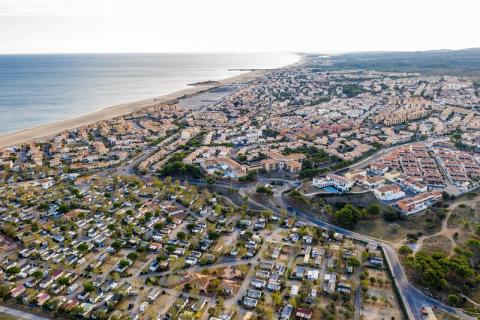A thesis and you move on?
In fact, the opposite is true.
Three years ago, our colleague Jules Boileau finished his thesis on the integration of the ERC sequence (avoid, reduce, compensate) into regional planning.
Since then, he has been taking the message all over France. And the lines are moving in the regions.
Here's just one example: the 2025 edition of the CRERCO (Communauté Régionale Eviter Réduire Compenser en Occitanie) seminar was held today in Narbonne, focusing on the role of the ERC in planning. Jules presented his work, which illustrates the need for an approach that combines science and consultation.
A consensus is therefore emerging around the need to plan and anticipate this process, on the scale of entire territories (and not project by project) and by integrating more robust methods.
In this respect, the work we have carried out in recent years with Nîmes Métropole has enabled us to test the effectiveness of such an approach.
Initially focusing on the avoidance phase, this work combined the use of ecological modelling (with SimOïko, our species life simulation software) and the holding of a number of co-construction workshops with local stakeholders.
The result was the development of an avoidance strategy that was shared, understood and accepted by all stakeholders, in particular the local authority's technical services.
This led to a significant reduction in the need for compensation (and therefore substantial financial savings) and to the resolution of certain conflicts or blockages that may have existed, particularly with government departments.
Three years after its completion, Jules' thesis is far from having been forgotten on a shelf. On the contrary, it forms the basis of a methodology that we continue to refine, with the need to reconcile two major imperatives:
- draw on science to produce robust diagnoses that take account of ecological functionality;
- get all the players in the area (including elected representatives) to discuss the ecological issues, so that over and above the technical and scientific dimension of the exercise, they can work together to develop a desirable strategy.
If you haven't already done so, we recommend that you read the guide published last year by the French Office for Biodiversity, the UPGE (Professional Union for Ecological Engineering) and the Fédération des SCoT, the title of which sums it all up: ‘Stratégie écologique territoriale: intégrer la biodiversité dans l'aménagement du territoire’ (‘Territorial ecological strategy: integrating biodiversity into regional planning’). https://www.genie-ecologique.fr/wp-content/uploads/2024/08/Note-vf.pdf
